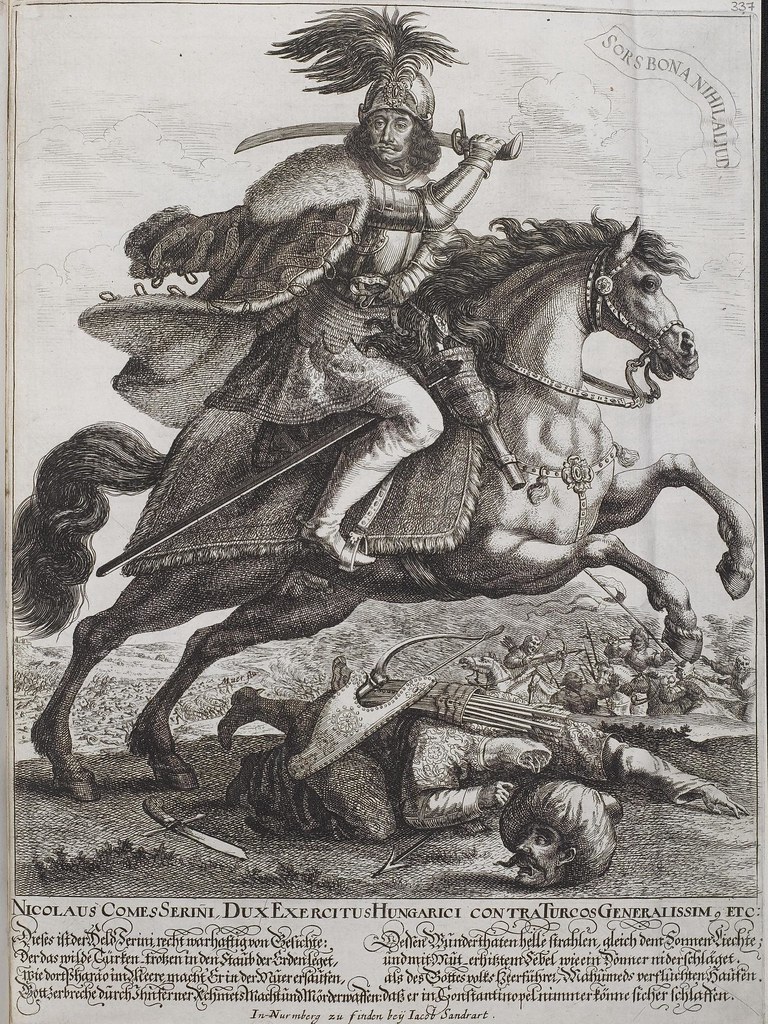|
|
Nikola Zrinski
by Jacob von Sandrart, 1663/64

NICOLAUS COMES SERINI DUX EXERCITUS HUNGARICI CONTRA TURCOS GENERALISSIM ETC
A larger image of Nikola Zrinski, by Jacob von Sandrart (3 May 1630, Frankfurt am Main — 15 August 1708, Nuremberg)
Source: Universitätsbibliothek Heidelberg. Fürstlich Waldecksche Hofbibliothek [Hrsg.] Klebebände (Band 2)
Miklós Zrínyi (Hungarian: Zrínyi Miklós, Croatian: Nikola Zrinski; 5 January 1620 – 18 November 1664) was a Croatian and Hungarian military leader, statesman and poet.
He was a member of the House of Zrinski (or Zrínyi), a Croatian-Hungarian noble family.
In 1645, during the closing stages of the Thirty Years' War, he acted against the Swedish troops in Moravia, equipping an army corps at his own expense.
At Szkalec he scattered a Swedish division and took 2,000 prisoners.
At Eger he saved the Holy Roman Emperor, Ferdinand III, who had been surprised at night in his camp by the offensive of Carl Gustaf Wrangel.
He routed the army of George I Rákóczi, prince of Transylvania, on the Upper Tisza. For his services, the emperor appointed him captain of Croatia.
In 1646 he distinguished himself in the actions against Ottomans.
During 1652–1653, Zrínyi was continually fighting against the Ottomans.
In 1663, the Turkish army, led by Grand Vizier Köprülü Ahmed, launched an overwhelming offensive against Royal Hungary, ultimately aiming at the siege and occupation of Vienna.
The imperial army failed to put up any notable resistance; the Turkish army was eventually stopped by adverse weather conditions.
As a preparation for the new Turkish onslaught due next year, German troops were recruited from the Holy Roman Empire and aid was called from France, and Zrínyi,
under the overall command of the Italian Raimondo Montecuccoli, leader of the Imperial army, was named commander-in-chief of the Hungarian army.
Re-capturing the fortresses of Berzence and Babócsa, and the town of Pécs on his way, Zrínyi advanced 240 kilometers in enemy territory and on 1 February 1664 destroyed
the strongly fortified Suleiman Bridge (the Osijek (Hungarian: Eszék) bridge) which, since 1566, had linked Darda to Osijek (across the Drava and the marshes of Baranya).
He died while hunting on 18 November 1664.
|
|

